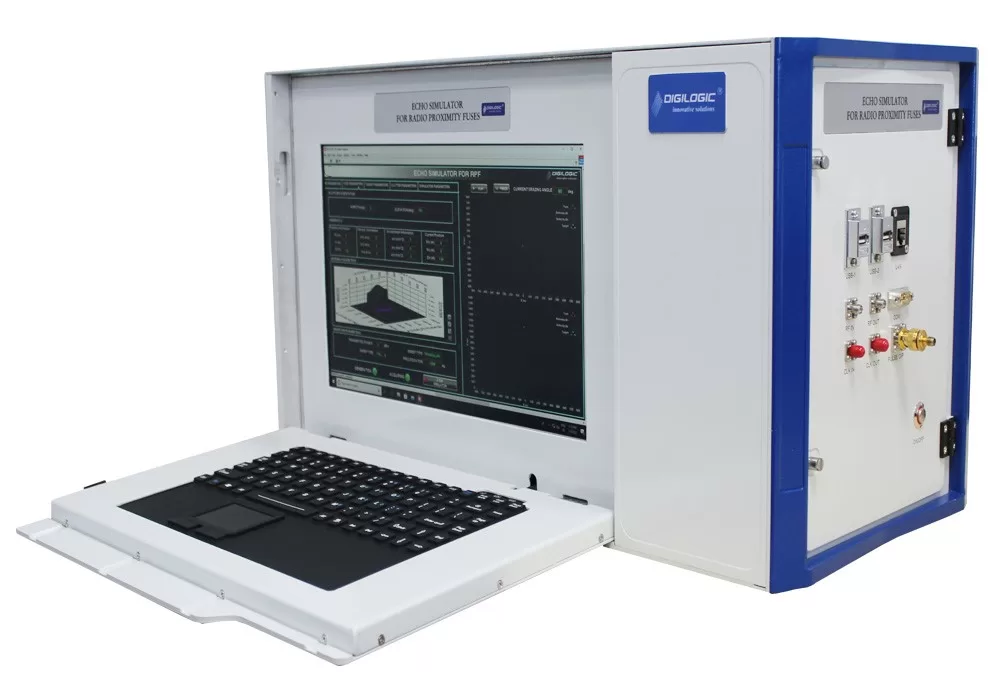

Digilogic Systems Echo Simulator for Radio Proximity Fuze works on the DRFM architecture. This DRFM based system is used to simulate Target echo and Clutter characteristics to test and validate the Device Under Tests functionality. Echo Simulator for Radio Proximity Fuze is designed and developed on NI PXIe technology. It includes a Vector signal Transceiver which can be configured from C to Ku frequency band, an FPGA Co-processor module to help provide extra processing power to run the simulations and NI Serial Interface module to receive feedback from Device Under Test.
Features:
- Wide range of operating frequency (5 to 18 GHz).
- This product accepts an input signal of FMCW.
- This product has a instantaneous bandwidth programmable upto 1 GHz.
- Various terrains such as mud, water, sand, grass, concrete etc. can be simulated.
- Test setup can be customized to be portable or set up in a lab.

The above figure shows the test setup made for testing the Height of Burst (HOB) of Radio proximity fuze. The fuze is powered up using a power supply and once the fuze is switched on it starts generating chirp waveform from its RF out. This signal is received by the receive antenna at simulator end, and down converted to baseband by RF module. This baseband signal is streamed to FPGA to implement target features. Once the target parameters like range, velocity and RCS are simulated, the signal is fed back from FPGA to RF module. The RF module upconverts the baseband signal and transmits this signal (Target Echo) using the Transmit antenna at simulator end.
The output of the fuze is then observed on the oscilloscope.
GUI Images:


